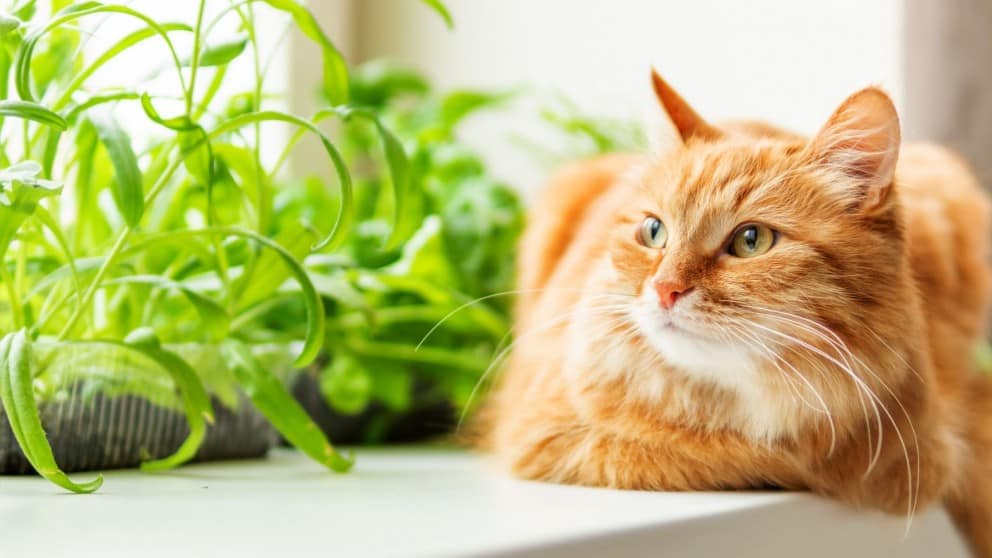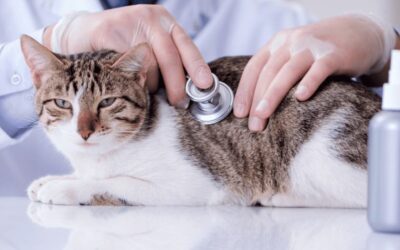Top 7 Causes of Cat Allergies

Do you suspect that your furry friend is suffering from allergies? Just like humans, cats can also develop allergies to various environmental and dietary factors. Allergies can result in a range of symptoms that can affect your cat’s health and well-being. Identifying the causes of your cat’s allergies can be tricky, but it’s essential to take the necessary steps to manage their symptoms and improve their quality of life. In this blog post, we’ll explore the top causes of allergies in cats so you can better understand your feline friend’s condition and take the appropriate measures to keep them healthy and happy.
#1 Flea Bites
Cats can be very susceptible to flea-related allergies. Many cats have allergies to fleas and become incredibly itchy after being bitten just once or twice. You may not be able to find any evidence of fleas on your cat because cats with flea allergies tend to clean themselves very aggressively. Licking, biting, or scratching, particularly around the neck, thighs, belly, flanks, and base of the tail, can be signs of a flea allergy in cats. The best way to manage flea allergies are long-term use of a flea control medication containing an adulticide and an insect growth regulator (IGR) that prevents immature fleas from growing up and reproducing. Remember to never use canine flea medications on cats since it can make them extremely sick.

#2 Pollen
Allergies to tree, weed, and grass pollen are common in cats. Affected individuals lick, chew, and scratch anywhere on their bodies and, in severe cases, may cause significant skin damage. The best way to determine what your cat might be allergic to is to schedule an intradermal (skin) or blood test for allergies with your veterinarian or a veterinary dermatologist. Keeping cats indoors with the windows shut and using an air conditioner and/or air filter during problematic times can reduce your cat’s exposure to pollen. Regular bathing or at least wiping your cat with a damp cloth helps remove pollen that becomes trapped in the fur. Veterinarians can prescribe fatty acid supplements, anti-histamines, hypo-sensitization therapy, immunosuppressive drugs, and other treatments to keep cats with pollen allergies comfortable.
#3 House Dust
Cats can also be allergic to indoor allergens like mold, dust, household mites, etc. Indoor allergies are indistinguishable from outdoor allergies, except that the licking, biting, and scratching are often year-round rather than seasonal right from the start. Again, either an intradermal or blood test can be used to determine the cause. To reduce your cat’s exposure to indoor allergens, deal with any mold problems in your home, clean frequently and thoroughly, use air filters, and regularly bathe or wipe your cat’s coat with a damp cloth. Veterinarians can prescribe similar prescriptions as they do for outdoor allergens to help manage symptoms for your cat.
#4 Food Allergies
Allergies to particular ingredients in food are another type of feline allergy. Cats with food allergies typically have:
- Itchy skin
- Recurrent skin
- Ear infections
- Vomiting
- Diarrhea
- Increased gassiness.
Cats can develop food allergies at any age, whether they have been eating the same food for years or have recently started eating something new. To diagnose a food allergy, your cat must be fed either a novel ingredient diet (e.g., duck and potato) or a hydrolyzed food (and nothing else but water) for six to eight weeks. If the symptoms disappear during that time, your cat has a food allergy. To treat your cat’s food allergy, you can either continue to feed the food used in the diet trial or reintroduce standard ingredients one at a time to determine exactly what they are allergic to. While some food-allergic cats can eat hypoallergenic diets that are available over the counter, others have to eat the more strictly regulated foods that are only available through veterinarians.

#5 Plastic
Similar to humans, cats can be allergic to plastic. Reports seem to link eating and drinking from plastic bowls with a condition called feline chine acne that may be allergy related. Cats with chin acne have solid or pus-filled bumps around their chins. If you think your cat might be allergic to plastic, try switching to ceramic or glass plates or bowls, but make sure you clean them regularly since the bacteria that can form on the bottom is another possible trigger for chin acne.
#6 Scented Products
Some cats are very sensitive to the perfumes that are frequently added to cat litters, cleaning products, air sprays, carpet powders, dryer cloths, etc. If you find that your cat is sneezing or becoming itchy after contact with these types of products or is trying to avoid perfumed areas altogether, an allergic or irritant-type reaction may be to blame. Try switching to unscented products and see if your cat’s symptoms disappear.
Some of our favorite pet-safe cleaning brands are:
#7 Prescription Medication
Drug allergies are typically rare in cats, but any cat can have an adverse reaction to a particular drug without warning. Symptoms vary but can include itching, hives, fever, vomiting, hair loss, and, in severe cases, anaphylaxis, which may cause difficulty breathing, collapsing, seizures, or death. If you suspect that your cat is reacting poorly to a medication or have any other concerns about your cat’s health, call your vet immediately.
Find Out First…
Of course, it is possible that different cat allergies can coexist or that a cat doesn’t have allergies at all and instead is suffering from some sort of viral or bacterial infection. The best way to proceed, as always, if your cat isn’t feeling well is to seek the advice of your veterinarian. He or she will be able to run a screen for different cat allergies on your pet so that you can pinpoint what’s happening and why. Once you have that knowledge in place, you can decide together on the best way to move forward.
The best way forward regarding managing your cat’s allergies could include several corrective and/or preventative steps. For instance, if one of the causes of your cat’s allergies is pollen, you may need to consider keeping your cat inside during certain times of the year when those pollens are at their highest levels. Of course, if your cat’s allergies are due to food, you should remove any and all exposure to that food.
These preventative steps may not be the cure-all for your cat’s allergies, as you may also need some medications to help manage the situation. Once again, you and your veterinarian can decide on the best course of action, but if your cat is presenting with persistent symptoms that are not going away on their own, don’t assume that it’ll pass. Instead, find out what’s happening, as whether it’s cat allergies or something else, you’ll need to do something to deal with it.
Do you have a pet cat? Here is a simple guide to know how often you should bring your cat to the vet.
*Updated on April 19, 2024



